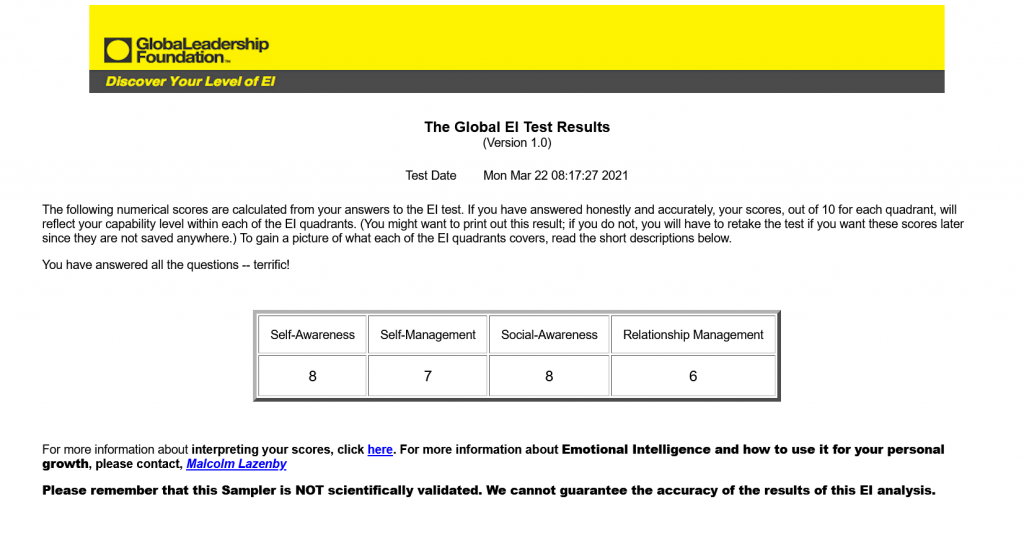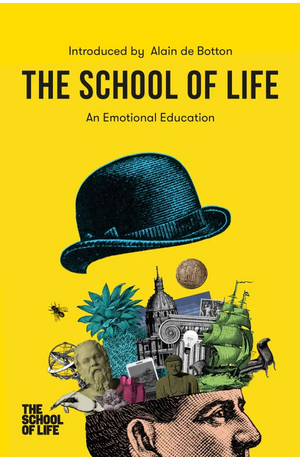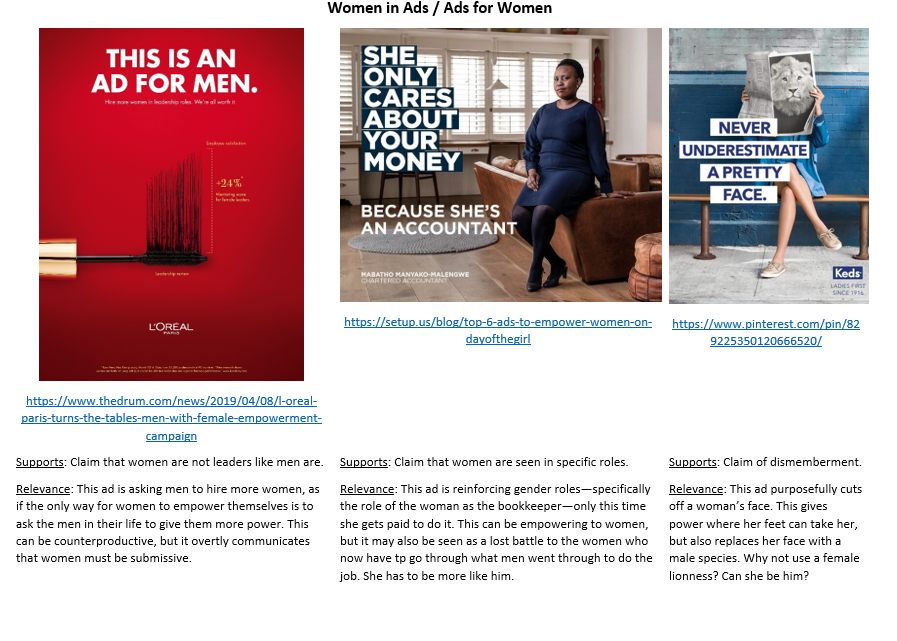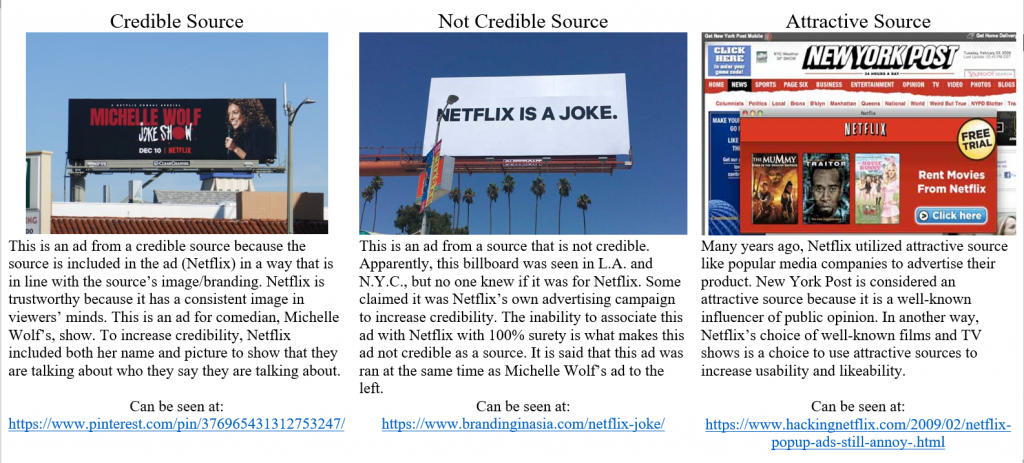Blog 10 – Now & Then
In Blog 1, we were prompted to write about what we expect to learn in this class and to define social psychology. I do not have access to the prompt anymore, but I can tell from what I wrote and from what I remember that this was the objective of Blog 1. Using the information provided in the course syllabus, I was able to garner an idea of what social psychology is before opening a book. My instructor(s) provided me a concise, organized definition upon entering the class and have prompted me with assignments to prepare me to be able to also define and discuss social psychology in a similar manner.
My initial course expectations were to learn about sociality and how best to connect data with observation. The course objectives involved learning about and hopefully mastering concepts of relationship formation, self-identity, attitudes towards others, and behavior in social settings. I believe that I have partially achieved these course objectives, as I have a fundamental understanding of social psychology now but am not knowledgeable enough to claim that I have mastered the concepts. My knowledge of social psychology has definitely increased and expanded which has changed my attitude towards the subject. My attitudes about self-regulation and ego depletion changed in particular. I realized that I was understanding these concepts incorrectly. For example, I believed that self-regulation was about controlling emotions, but now believe that self-regulation is about managing self-reflection in interactions. This changed my attitude from bitter to responsible.
One thing I would do differently if I took this class again would be to take more notes. This blog has served as an excellent repository of learning material, but notes should still be taken as you go through the textbook, so test preparation is easier and overall likelihood of retention is greater. Additionally, the repetition will likely ensure that the concepts are not only retrievable in memory, but also correctly retrievable, as there is little room for interpretation with some of these concepts. This is, in fact, one way in which I have grown academically—by realizing that I cannot use the same shortcuts (heuristics) that I am used to using to truly learn about new material.
One skill that I gained from this course is discernment. Many concepts overlap and, quite frankly, become reversible. For example, cognition influences affect, but the opposite can be true where/when affect influences cognition. Only the best of the best will know when each statement is [more] applicable. I will absolutely benefit in my professional life from gaining this skill, as I will be able to think critically more quickly making risk assessment much more feasible.
In a Nutshell:
I chose this image as a visual representation of my academic growth in this class because I experienced ups and downs with some of my individual grades. Some grades were consistently high and others (like test grades) had a slight decline. While the variance in my grades may not be exactly like that of the image, the framework is the same. I can’t possibly get below zero in this scenario. There are no negatives!
Blog 9 – Top 3
The top three concepts I learned the most about from doing these e-portfolio assignments are emotional intelligence, mating behaviors, and prejudice. I learned to distinguish between emotional intelligence and self-regulation. I always sensed that being able to control one’s emotions does not necessarily equate to high emotional intelligence, and this blog helped me to back up that sense. Imagine how much growth and healing could transpire if we taught our children how and why to express their emotions instead of how to constantly control (and suppress) them. In an environment that encourages expression, the likely reciprocation could actually be more self-regulation, after-all. An important note I made about emotional intelligence was reflected in a video I shared in Blog 7. This video contains footage from the 60s and depicts various infants’ reactions to toys and the activity of playing with toys. The infants who played with the toy (red building blocks) were from healthy homes and of a healthy weight. The infants who avoided playing with the toys, or who did so very minimally, were from unhealthy homes (orphans) and were underweight. Researchers described the latter as being emotionally neglected. I thought the behavior could be explained by gender differences as well.
Secondly, I learned a lot about mating behaviors. Although Blog 8 specifically discussed mating behaviors between men and women, I believe that the framework of mating was reiterated throughout the entire course. As Social Psychology speaks to the development of relationships, nearly everything under the umbrella of social psychology can be considered a “mating” call–what motivates us, why we like people, who/what we listen to, and even how we define ourselves in the context of the other. Mates can be friends or lovers or both depending on the context. It is the reason for human life and thus the reason for social psychology.
Lastly, I learned the most about prejudice. I learned that I was not using this term appropriately. I have used this term to describe actions when it really should be used to describe a person’s emotions and attitudes. After learning about prejudice, I am better able to identify and discuss racism in an orderly manner. Basically, racism can be chronologically ordered as prejudice influencing the use of stereotypes which leads to discrimination. This lesson was the most important lesson for me to learn this semester. It mirrors the lessons learned about sexism, and will stay with me long after graduation.
A visual representation:
I chose this image because it depicts how I learned about social psychology: by storing concepts of reality in my mind. In doing so, my own self-identity is affected. Am I me or am I a storage unit of knowledge about the people, places, and things around me? Are the two the same?
Blog 8 – Mating
Mating behaviors in humans are as vast as mating behaviors in animals. While some humans mate to reproduce, others mate to reproduce and spend their lives together. The latter will eat together, sleep together, and migrate together. The former will have differing activities that the individual sexes will attend to, but the two will meet and attempt reproduction when their bodies tell them to. Humans are the same way plus some, as sexuality and mating are more complex in humans. Males and females are sexual beings—they not only want to have sex, but need to have sex, so they can continue to exist. This biological fact is the main driving force behind mating (reproduction), but it is clearly from a heterosexual narrative. As sexuality has developed, and with rapid advances in technology, people have been able to create “artificial” cells from live cells. Methods like egg freezing, sperm donation, embryotic fertilization, hormone therapy, and stem-cell practices have completely changed mating behaviors. Some of the newest (most controversial) studies are discovering almost unreal ways to create life.
In heterosexual couples, men and women can consider themselves creators of life which is very empowering. The women can feel like a changeable being—one who goes through cycles and is always anticipating changes. She instinctively knows and learns that her body is important. In fact, she is born with a lot of what she has to offer (her eggs). The man, on the other hand, can feel like he has merely arrived and needs to affectively make change happen. He can feel that change (motion) is a law that remains constant more than anything. So, even with changes happening around him, he must do something else besides exist to change.
Men and Women are opposites for sure, so they naturally upset each other. They both sing their own song that, when combined, can be harmonious or disharmonious. One way men upset women is bragging about size and amount to equate it to a powerful position in life.
A representative image:
One way women upset men is by failing to acknowledge their natural differences and intensely claiming that everything needs to change in order for there to be peace (i.e. equality) between them. I think many men wish women could retain some of their ancestral roots as to allow for balance.
A representative image:
Blog 7 – Emotional Intelligence
As self-regulation relates to the ability to control one’s emotions, it can be inferred that those high in self-regulation are also high in emotional intelligence. You have to know what emotions you’re controlling if you are to be able to control them afterall. This may seem like the most logical conclusion to make about self-regulation and emotional intelligence, but the two aren’t solely connected this way. That is, high self-regulation does not always equate to high emotional intelligence. Those high in self-regulation are good at controlling the expression of their emotions, but if they only have one tone of emotions, then can they really be considered emotionally intelligent? High emotional intelligence includes the ability to interpret the emotions of others, not just oneself. So, is being able to control one’s own emotions really the same as being emotionally intelligent all around?
When our self is defined by the other, then emotions that come from the self or others are essentially the same. They are both emotions. So, while high self-regulation can and usually does indicate high emotional intelligence, the two aren’t exclusively linked as such. There are exceptions to the rule. A better question may be why are high self-regulators wanting to control their emotions so much? To me, emotional intelligence doesn’t just mean you have more emotions, but also means that you can manage emotional matters and recognize them–in yourself and others. Someone high in emotional intelligence would hopefully want to allow emotions to be expressed rather than try to regulate them.
Here’s an example of my EQ (or Emotional Quotient AKA Emotional Intelligence):

This EI test used coded questions to measure emotional intelligence. Though it is not specifically stated, it is assumed that higher scores indicate high levels of EI. My scores were all higher than 5/10 which indicates that I have a high emotional intelligence. I would agree with these results. An example of my high emotional intelligence is my relationship with my pets and animals in general. Since we do not speak the same language I have to rely on nonverbal cues like behavior, body language, and (believe it or not) emotions.
Just for fun:
Peek this documentation from 1965 of babies’ differing responses to play toys (blocks) and how it relates to emotional neglect:
Blog 6 – Women in Ads/Ads for Women
Since I am currently taking a class on media marketing promotion and I have taken a class on communication between the sexes I am actually somewhat familiar with the differences among gender representation in ads. In my marketing class, we previously analyzed and discussed the burger king ad that Kilbourne shows in her presentation (the one with a huge sandwich next to a woman’s mouth and copy that says “it’ll blow your mind”). Additionally, the gender communication class discussed gender disparity not just in ads but in nearly every aspect of life—from childhood development to adult participation. Even the word “human” can be criticized as a gendered term with patriarchal roots.
With this being said, I have noticed how ads distort, stereotype, and dehumanize women. Kilbourne says women are objectified, overly sexualized, and even endangered in many ads. She claims that women and young girls are at risk because of pop culture references like these types of ads and attributes them to low self-esteem and depression in girls. Here are five examples of ads that support Kilbourne’s claims and their relevance:
Blog 5 – Credibility
What makes a source credible, not credible, or simply attractive can be determined by analyzing the source in the context of rules and common sense. To really focus on the differences in credibility among sources, I chose to discuss ads from one company. This will hopefully allow for more focus on the ad structure and not just the company being advertised. Netflix is well-known now, but that doesn’t mean everything you read with Netflix’s name on it came from Netflix directly.
In Summary, the first ad is credible because it connects a name with a person and is in line with Netflix’s public branding. It is seen as being directly tied to Netflix and says what it means. The second ad is not credible because it leaves the viewer wondering if it is really a Netflix ad or a prank. The third ad is considered an attractive source because it uses a popular influential third party to boost credibility. I believe the attractive source is [or more likely was] effective at the time it was first aired because it is collaborative and appeals to appropriate audience. It is typically the case that people who like to read news articles and magazines will also appreciate watching movies and TV shows because of the connection with media environments.
Blog 4 – Exam Review
In my exam review I created a separate document in Google docs where the questions I got wrong can be rewritten and isolated from all the other questions. This was about a fifth of the test questions for me (10 out of 50 questions). With all the incorrect questions isolated I then moved on to looking at each one individually to see what was asked and what I answered. I used the e-book to look up possible relevant information. This is the easiest way to quickly look up a specific topic or subject matter. Some questions were easier to look up than others. 1 question was absolutely wrong. They text in the book confirmed that I chose the wrong answer. 2 questions I could not even look into, as the questions and the selected answer were subjective and depended on the value of the other answers. 3 questions had what I thought were multiple correct answers…and 4 questions were questionably wrong. What I chose seems like the right answer, but I suspect there may have more specific answers among the choices that could be more appropriate.
I learned that a good test review catches errors—whether human or technical, reveals areas that need focus and review (and perhaps re-coding), and can even provide insight into the test questions themselves. This feedback is essential for my learning and is something I look for with all of my assignments. I find it an injustice if students are not given the chance to review detailed exam results. Recording answers to test questions while taking a test is time-consuming and does not produce high reliability. It is also very stressful when the test has a time limit of only 1 hour. Simply recording the answer as I go does not provide much guidance beyond being able to remember what answer I selected. I admit I could have spent more time studying and taken better notes. This process will motivate me to strengthen my note-taking and studying habits to allow for firm understanding of the course material.
In a Nutshell:
I chose this meme as a visual representation of my attitude about my study habits. If the text doesn’t reveal my tendency to procrastinate, then Kermit the Frog might, as he has increasingly been associated with procrastinating in social media and pop culture.
Blog 3 – Music & Relationships
Music is as varied as the people that create it. New genres are being created over time and traditional genres continue to grow. Of course there is a connection between music and attraction, as attraction is a driving force behind music’s creation. Why else do musicians feel a push or pull to create music? With this being said, it is easy to relate to others over music. I agree that when someone likes the same music that I like I feel more attracted to them. There is comfort and likeness in our similar music interests. I actively look for similar music interests in potential romantic partners and friendships. My older brother and I have very different music interests and very different values. My younger sister likes some of the same music as me, but also some music that I don’t like, and we have the same balance in our value comparison—some similarities and some differences. In short, the more music interests you share with a person the more likely you are to share similar values. This is so true in my life!
To illustrate how music embodies personalities, here is a playlist of my most recent listening and a person/part of myself for each song:
- Bakar – “Hell N Back”
This song speaks to the relationship between my sister and her boyfriend. They stayed together after fights and through ambiguous times. Even with personal strife and hostility, they managed to be compassionate and even heal some long-held wounds by simply loving each other.
2. Bea Miller – “That Bitch”
This song speaks to male patriarchy and feminism. Power as explained in patriarchal terms has a negative connotation—a vulgarness even. This song speaks to the rage and outburst experienced in attempts to empower femininity. I associate this song with both myself and my sisters.
3. Foushee – “Deep End”
This song speaks to female empowerment and reminds me of a close friend. She is a responsible, dedicated, boss babe who is in control of her own life. She has worked very hard in her career and doesn’t like the idea of being taken care of by a man. She is intimidating and ready to speak her truth!
4. Ashnikko – “L8r Boi”
This song speaks to my own feeling of disdain with immature boys. This song is a tribute/follow-up to Avril Lavigne’s “Sk8er Boi” released in 2002. Both songs communicate concepts of self-respect and boundaries. They encourage young woman to take care of themselves and to have a long-term view on relationships. Historically women have been nurturers and caregivers, and this song seeks to address that in a new light.
5. Yung Gravy – “Oops!”
This song speaks to the immature boys I disdain. The artist speaks of having relations with women by accident. The artist is essentially communicating that his actions are not his own responsibility. He takes pride in his ability to get with women, but ultimately deems these experiences as accidents since they are unethical.
6. BENEE ft. Gus Dapperton – “Supalonely”
This song speaks to my own loneliness. I quit before I even start and I isolate myself. The value of being able to be alone and the value of connecting with others are both communicated in this song.
Blog 2 – Self-Efficacy
I believe myself to be an excellent student. I’ve always done well in learning environments and achieved high grades in a variety of subjects. I attribute this to a desire to learn which likely stems from pure curiosity. It may have to do with the brain’s ability to rationalize as well. The brain’s reasoning and judging capabilities are also functional. In short, that’s just how the brain works. It needs information to keep running. My brain certainly likes a lot of exercise! This is in part why I have a high level of confidence as a student. Another reason for my high level of confidence as a student is that I see myself as a contributor to academia rather than as someone who is retaining a childhood experience. This high level of confidence is reflected in my self-efficacy results of 3.7 on a scale of 1.0 – 4.0. Since my score is closer to the high end of the scale, I exhibit higher levels of self confidence, or self-efficacy. As it relates to task accomplishment, consider my self-efficacy results as equivalent to a GPA. GPA scales also range from 1.0 – 4.0 but account for much more effort than a survey response. GPA calculations are based on grades that you receive in a class that had numerous assignments over a 2-4 month period. To attain a high GPA is to work hard and do well–something only a person who is confident in their abilities can do. In this regard, confidence is directly correlated to ability to do so.
In a Nutshell:
Self-efficacy results are a lot like GPAs–only GPA scores have a lot of hard work behind them! Don’t let a 5 minute survey “ruin” you. If anything, these 5 minute surveys should teach you that you can change the way you see yourself within a couple of minutes! Something that simple actually comes from years of work by many people. I chose this image because it represents measures of self-efficacy (emphasis on measures). I should feel proud of this type of measurement, but I don’t always feel that way. Self-efficacy, like GPAs, reflects huge amounts of work done beyond the surface. The effort you put in should be what you get out, but it has to go through a standard. Some worship the standard while others despise it. Whoever you decide to be, just don’t hurt yourself or others.
Blog 1 – Course Objectives
The objective of this course is to learn the fundamentals of Social Psychology. We will dive into this specific branch of psychology to discover how and why people interact with each other. Relevant areas of study include relationship formation, self-identity, attitudes towards others, and behavior in social settings. These areas of study will contribute to my own self-identity, and perhaps to my interactions with others. In short, my social life will affectively change in the future as a result of taking this class. I expect to learn about the science behind sociality and how best to connect data with observation. I am hoping to gain a more logical approach to and understanding of social psychology, and plan to do so by completing all assignments in a fully engaged manner. I plan to stay fully engaged by implementing a narrative alongside my studies. I’ll imagine real-life examples of the concepts I’m learning about to strengthen my memory of the concept. This practice will blend well with this blog, as I am being tasked with developing my own storyline of the course concepts.
In a Nutshell:

“Evil Witch”
Source: https://ew.com/movies/witch-movies/

“Good Witch”
I chose these images as representations of the concept of schemas. Schemas are sort of like expectations that we have for things, people, events, and more. Schemas are linked to memory building and are essentially the framework for reality. What starts as observed patterns and turns into a concrete expectation is characteristic of a schema. They are the backbone to roles, identities, and beliefs, and subsequently play a large part in spontaneity and shock. I say this because schemas are so engrained in the human mind that when faced with something that goes against a schema that one has incongruence occurs. This means that the mind will be surprised and actually go through additional effort to fit something into the schema or note something as going against the schema. The images are of the two witches from “The Wizard of Oz,” The Wicked Witch of the West and Glinda, respectively. The first image is The Wicked Witch of the West and she is known as the evil witch. The second image is Glinda and she is known as the good witch. When one thinks of “witch” either the first image or the second image may serve as a schema. Depending on the initial schema one has of the term “witch” incongruence may occur. Which witch represents your schema?







